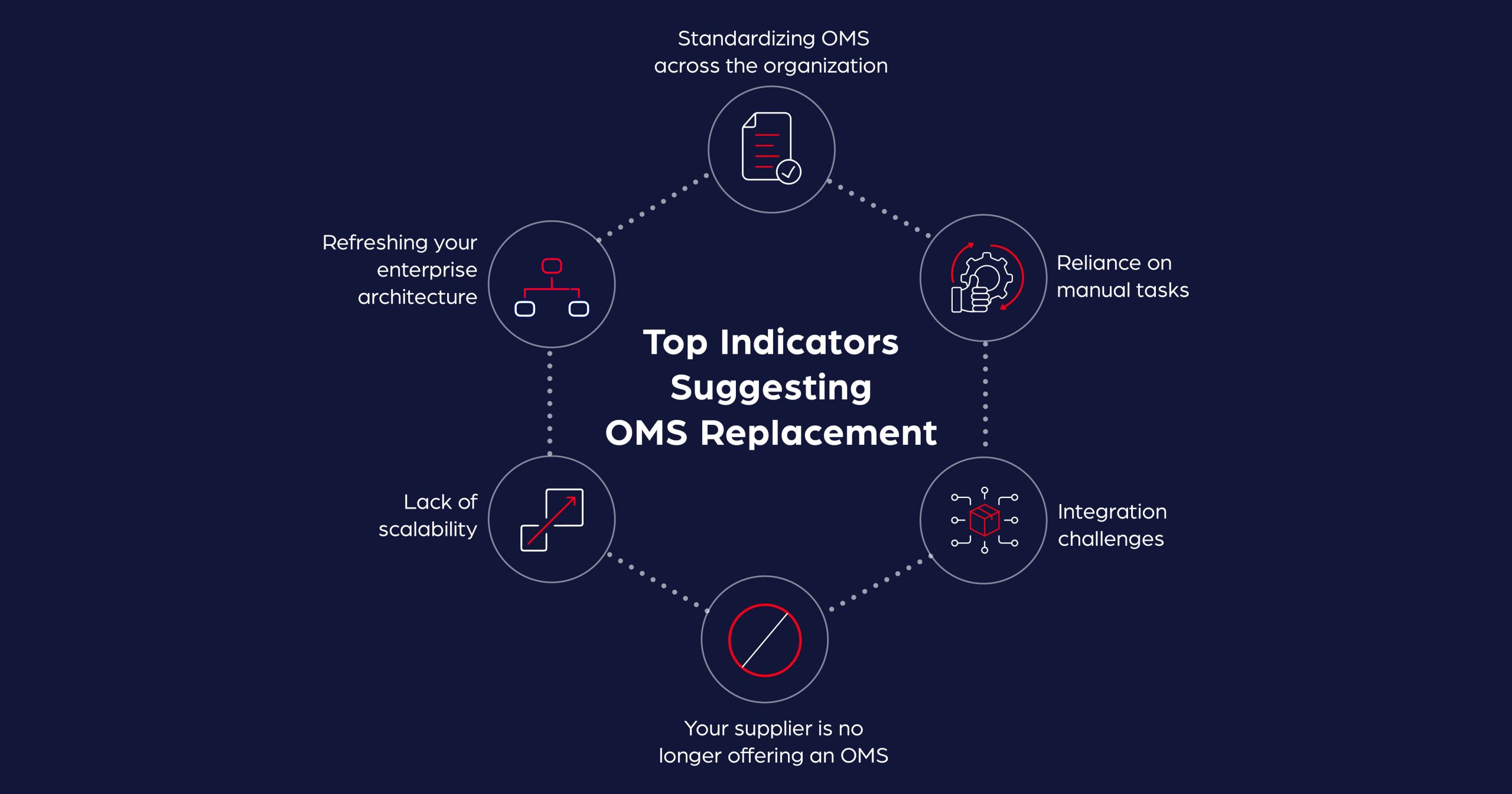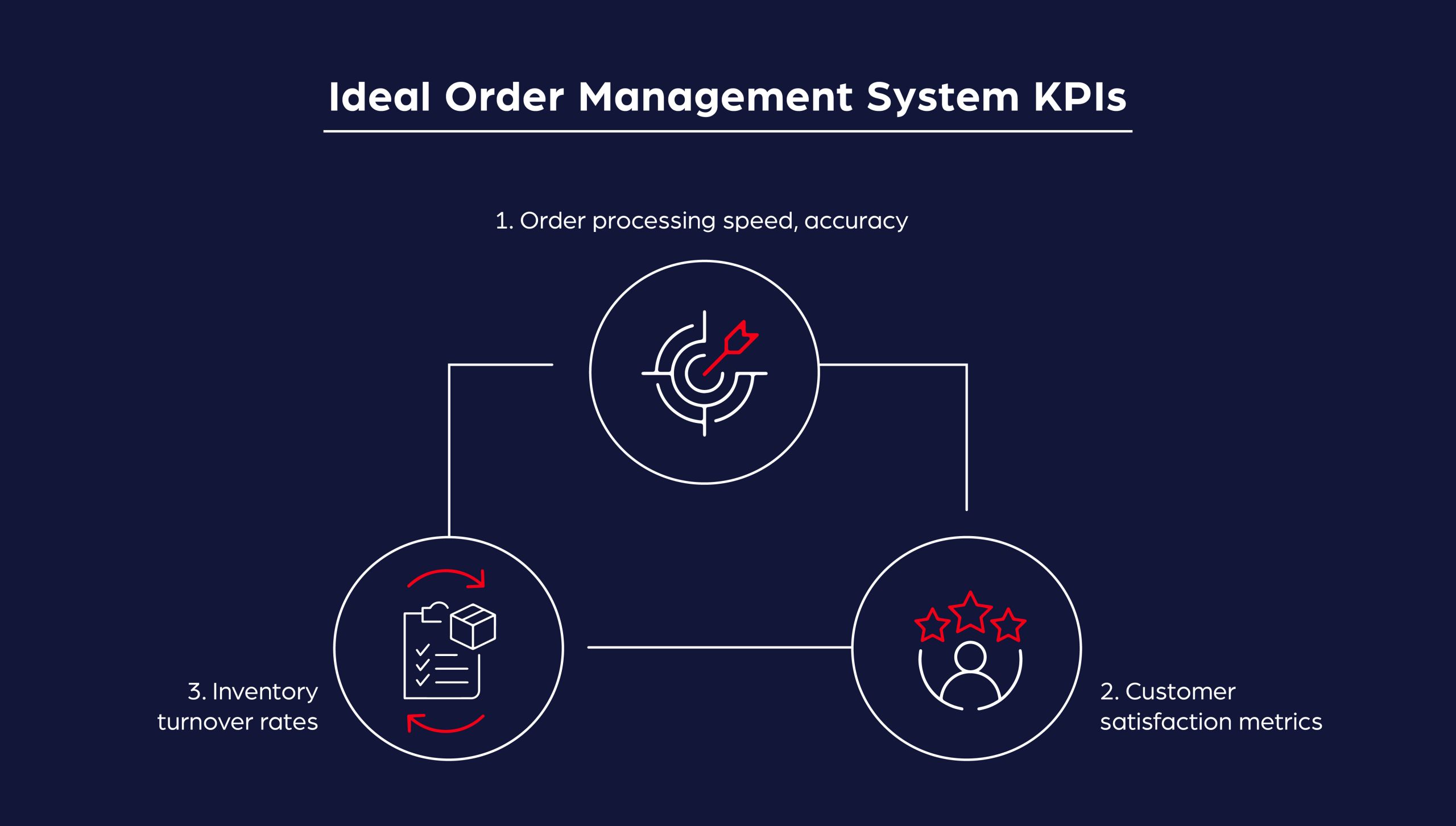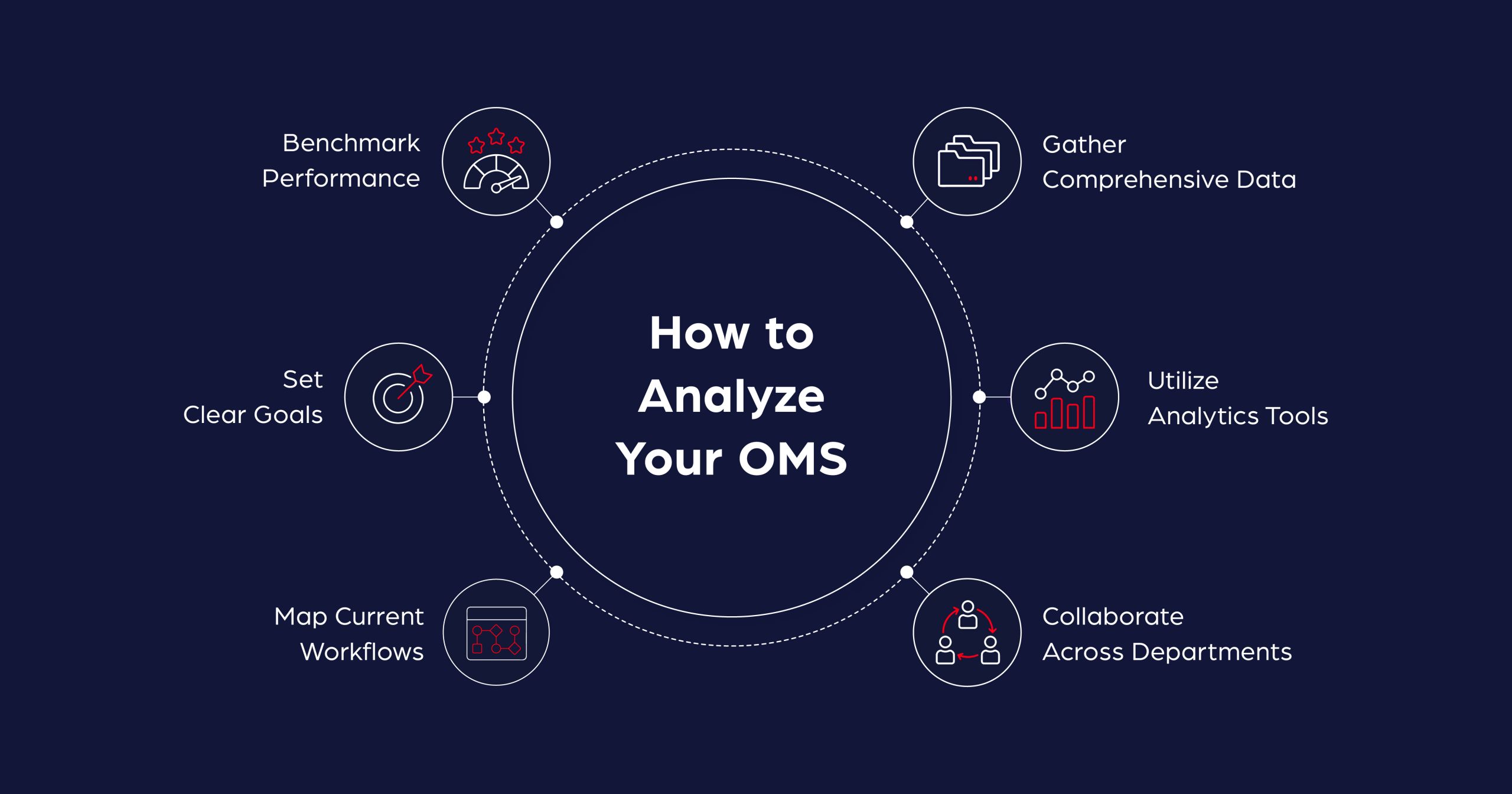
1. Introduction
Your Order Management System (OMS) is the central nervous system of your business. It’s responsible for orchestrating order processing workflows from the moment orders are placed until the final delivery. It may also serve as a backbone to your inventory management, ensuring products are available when and where they’re needed. It’s the heart of your customer experience, dictating whether orders are accurate, timely, and smoothly executed.
In essence, your OMS is a linchpin that can either accelerate your business to new heights or hold you back.
So, why would you want to change yours?
Well, like any technology, order management solutions have a lifespan, and there comes a time when upgrading or replacing your OMS becomes necessary.
Knowing when it’s the right time to acquire a new order management system is crucial for operational excellence, customer satisfaction, and business growth.
2. Indicators for OMS Replacement
There comes a pivotal moment in online retail when upgrading or replacing your OMS is not just an option but an imperative move. How do you know your Order Management Software has run its course for your business?
Here are the top indicators that suggest it’s time to consider getting a new Order Management System:

a. You’re standardizing OMS across the organization
If each branch of your brand or business uses a different OMS solution, it can lead to inefficiencies, data inconsistencies, and operational challenges. Standardizing your OMS across your outlets, distribution partners, retailers, and enablers ensures consistency, facilitates collaboration, and streamlines processes.
b. Your team depends on too many manual tasks
If your team spends an excessive amount of time on manual tasks, such as order processing, inventory management, or data entry, it’s a clear sign that your OMS may be outdated. Automation is key to efficiency and reducing the risk of human errors. A modern OMS with advanced automation features can free up your team’s time and improve accuracy.
c. Your OMS is not connected to all the platforms you work with
Integrations are critical for seamless digital and omnichannel retail. If your current OMS cannot maintain continuous integrations with other systems, such as Customer Relationship Management (CRM) software, Enterprise Resource Planning (ERP) systems, or third-party applications, it can result in data silos and hinder your decision-making process.
d. Your supplier no longer offers order management software
In some cases, the decision to replace your OMS may be forced upon you. If your OMS provider discontinues support or no longer offers updates and maintenance for this system, it poses a significant risk to your business.
Across all industries, nearly 40% of CEOs don’t think their companies will be economically viable in a decade if they continue on their current path. And, around 41% of CEOs in the technology industry are pessimistic about the long-term viability of their business model. This results in tough choices, like rethinking their offerings and recalling some products and solutions.
Operating with unsupported order management software can result in security vulnerabilities, compliance issues, and a lack of access to critical features. In such situations, it’s imperative to proactively seek a new Order Management System.
e. You’re unable to scale your business
Business growth often leads to increased order volumes and complexity. If your current OMS struggles to scale with your expansion, resulting in performance bottlenecks or disruptions in order processing, it’s a clear indication that you need a more scalable solution. A modern cloud-based OMS should seamlessly adapt to accommodate your growing demands.
For example, Grand Meltique, Malaysia’s leading FMCG distributor invested in an 8100 ft. plant and 20,000 cubic ft. cold storage space to cope with the demand from the growing population in the area. However, without updating their OMS to cope with this scale, they experienced difficulty controlling overselling, inefficient order management, and high costs.

f. You’re refreshing your enterprise architecture
If you’ve recently updated or plan to update your enterprise architecture, it’s essential to assess whether your current OMS is in sync with the broader technological landscape. An outdated OMS can act as a bottleneck, hindering your progress.
For example, Everbest Group, a renowned Indonesian fashion retail company, implemented an omnichannel business model and expanded their retail across different channels. Managing 1000 monthly orders across their new business model proved tough with their old order management methods. Fulfilling orders across marketplaces took over 6 hours to complete every day.

3. Assess Your Current Order Management System
Evaluating your current OMS should be an annual process so you can ensure whether or not your Order Management System works in unison with your objectives. An OMS that’s operating at its peak performance ensures seamless order processing but also contributes to improved customer experiences, reduced operational costs, and better decision-making. Conversely, an outdated or inefficient OMS can hinder your growth, lead to customer dissatisfaction, and result in missed opportunities.
To assess the current compatibility of your OMS, consider conducting a performance audit. This audit involves a thorough examination of your OMS’s functionalities, configurations, and integration capabilities. It aims to identify areas where your system excels and where it may fall short.
The audit often involves assessing key performance indicators (KPIs) such as –

- order processing speed, accuracy
- inventory turnover rates
- and customer satisfaction metrics
Bottlenecks and inefficiencies often lurk within the intricate web of your operational processes. These can lead to delayed order processing, increased operational costs, and dissatisfied customers. By conducting a data and process analysis, you have the opportunity to:

- Identify chokepoints in your order processing workflow.
- Pinpoint areas where manual interventions are frequent.
- Discover redundancies and unnecessary steps.
- Uncover opportunities for process automation.
This data-driven approach provides an objective view of your OMS’s performance and enables you to decide when it’s right to change your Order Management technology.
4. Questions to Ask When Evaluating Your OMS
When assessing your OMS, consider a wide range of factors, including:
- Order Processing Efficiency: How quickly and accurately are orders processed from placement to fulfillment? (Consider the measurement of KPIs like Order Cycle Time, Order Accuracy, Inventory Turnover, Stockout Rate, On-Time Delivery, Order Fill Rate, Order Return Rate, and Customer Complaints.)
- Inventory Management: Is your OMS effectively managing inventory levels, preventing overstocking or understocking? (Consider the measurement of KPIs like Inventory Turnover, Stockout Rate, Lead Time, Order Fill Rate, Accuracy of Demand Forecasting, Dead Stock or Obsolete Inventory, and Carrying Cost of Inventory.)
- Multichannel Support: Can your OMS seamlessly integrate with various sales channels and marketplaces?
- Reporting and Analytics: Are you gaining actionable insights from your OMS data to inform decision-making?
- Security and Compliance: Is your OMS equipped with robust security features and compliant with data protection regulations?
- Scalability: Can your OMS handle increasing order volumes and growing product catalogs?
- Automation: To what extent does your OMS automate manual tasks and reduce errors?
- Integration: Does your OMS integrate smoothly with other essential systems, such as CRM and ERP software?

5. Tips to Conduct a Successful Data and Process Analysis
To successfully conduct a data and process analysis, ensure you:
- Gather Comprehensive Data: Collect data from various sources, including customer orders, inventory records, and sales reports.
- Utilize Analytics Tools: Leverage data analytics tools to extract actionable insights.
- Collaborate Across Departments: Involve stakeholders from various departments to gain a holistic view of processes.
- Map Current Workflows: Create visual representations of your current workflows to identify inefficiencies.
- Set Clear Goals: Define clear objectives for the analysis, such as reducing processing time or improving inventory turnover.
- Benchmark Performance: Compare your findings against industry standards and best practices.

6. Define Your OMS Replacement or Exit Goals Before Implementing a New One
Before embarking on the journey to replace your existing Order Management System, it’s imperative to set clear and well-defined objectives for the transition. These objectives serve as a guiding light, helping you make informed decisions, allocate resources efficiently, and measure the success of your OMS replacement project.
Setting clear objectives is like charting a course for your OMS replacement project. Without a well-defined destination, you risk veering off course, encountering unexpected challenges, and failing to achieve the desired outcomes. Clear objectives provide a shared vision for your team, aligning efforts towards a common goal.
Your OMS is a critical component of your business operations, and its replacement should align with your broader business objectives. When your replacement goals align with your business objectives, you ensure that your new OMS will not only meet immediate needs but also support your long-term growth and strategic initiatives.
For example, if your business objective is to expand into new markets, your OMS replacement goal might be to enhance scalability and multichannel support. If cost reduction is a primary business goal, then streamlining operations and automating manual processes through the new OMS can be a key replacement objective.
7. Budget and Allocate Resources Appropriately
The financial aspect of OMS replacement is a critical consideration. It involves budgeting for the project and allocating resources efficiently to ensure a smooth transition. Financial planning is essential for avoiding unexpected costs and ensuring a return on investment (ROI) from your new OMS.
Here are some steps you can follow:
- Budget Allocation: Start by allocating a budget specifically for the OMS replacement project. Consider factors such as software licensing, implementation costs, training, and potential consulting or advisory services.
- ROI Analysis: Conduct a thorough analysis to estimate the potential ROI of the new OMS. Calculate the expected cost savings, efficiency gains, and revenue growth that the replacement can deliver over time.
- Resource Allocation: Allocate human resources wisely. Ensure that you have a dedicated project team with the necessary skills and expertise to oversee the implementation. Additionally, consider any additional hardware or infrastructure requirements.
- Contingency Planning: Build a contingency fund into your budget to address unexpected expenses or delays that may arise during the OMS replacement project.
- Monitoring and Adjustments: Continuously monitor the financial aspects of the project and be prepared to make adjustments as needed to stay within budget while achieving your objectives.
8. How to Implement Your New OMS
This phase involves the rollout of the new OMS across your organization, and it is a critical step in ensuring a successful transition. Here’s a breakdown of key aspects to consider during the implementation of the new Order Management System:

a. Discuss the Rollout Process of the New OMS
The rollout process is the actual deployment of the new OMS across your organization. It involves configuring the system, migrating data, and ensuring that all relevant processes are set up and ready for use. A well-planned rollout process is essential to minimize disruptions and ensure a smooth transition.
b. Emphasize the Importance of Training and Onboarding for Your Team
Effective training and onboarding are fundamental to the success of your new OMS. Your team needs to be well-prepared to use the system efficiently. This includes training sessions, workshops, and comprehensive documentation to familiarize users with the OMS’s features and functionalities. Investing in training ensures that your team can leverage the full potential of the new OMS from day one.
c. Recommend Continuous Monitoring and Feedback Collection
Once the new OMS is in operation, the journey doesn’t end; it evolves. Continuous monitoring and feedback collection are essential to track how well the OMS is performing in a real-world environment. Encourage your team to report issues, provide feedback, and suggest improvements. Regular check-ins and surveys can help gather valuable insights into user experiences and areas that may require adjustments.
d. Explain the Need for Ongoing Monitoring and Optimization
The business landscape is dynamic, and your OMS should adapt accordingly. Ongoing monitoring involves tracking key performance indicators (KPIs) related to order processing, inventory management, and customer satisfaction. By monitoring these KPIs, you can identify bottlenecks, inefficiencies, or areas for improvement and take proactive measures to optimize the system continuously.
e. Discuss How to Track the Performance of the New OMS Against Set Objectives
To ensure that your new OMS is meeting its intended goals and objectives, it’s essential to track its performance against the criteria established during the planning phase. Regularly assess whether the OMS is delivering on its promises, such as improved efficiency, cost reduction, scalability, or enhanced customer experiences. If the system is falling short in any areas, take corrective actions promptly.
9. Why is an OMS So Important Today?
An Order Management System is the heart of the order processing and fulfillment process. So, it determines the success of your customer relationships and your overall business.
At Anchanto, we’ve seen several businesses of different sizes excel after implementing the right order management software for their needs. Here’s what some of our clients have achieved after implementing Anchanto Order Management:

10. Conclusion
Implementing a new OMS is a multifaceted process that involves careful planning, effective training, continuous monitoring, and ongoing optimization. By prioritizing the rollout process, training and onboarding, feedback collection, and performance tracking, you can maximize the benefits of your new OMS and ensure that it remains aligned with your business objectives in an ever-changing business environment.
But also remember, the implementation phase is not the end; it’s the beginning of a journey toward operational excellence and business growth.
References – 1
